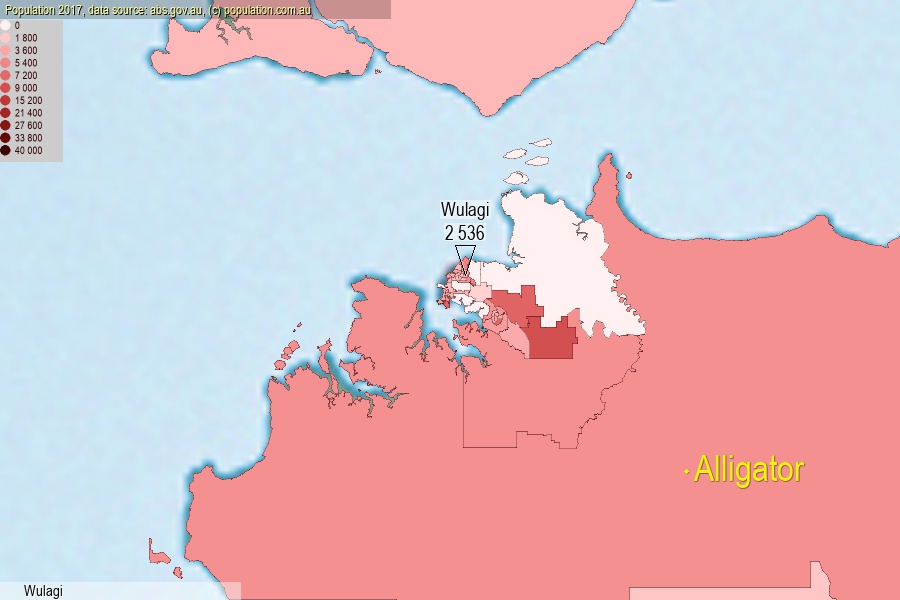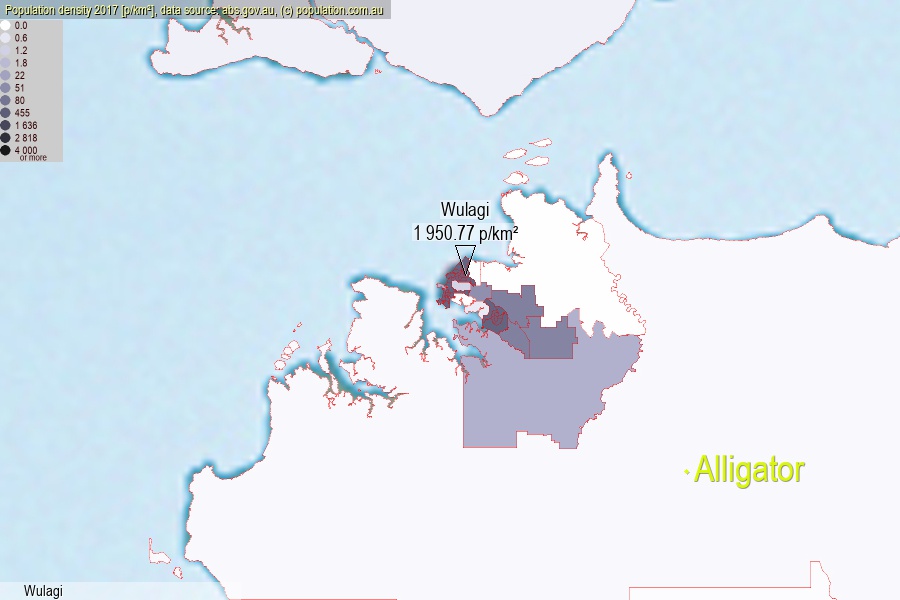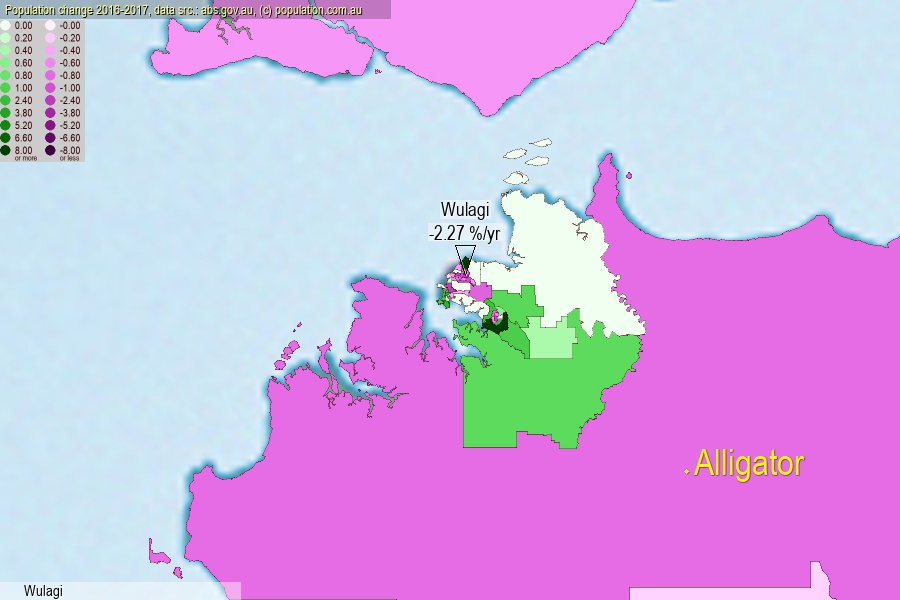 population.com.au
population.com.auLast official estimated population of Wulagi (as Statistical Area Level 2) was 2 536 people (on 2017-06-30)[2]. This was 0.01% of total Australian population and 1.028% of NT population. Area of Wulagi is 1.30 km², in this year population density was 1 950.77 p/km² . If population growth rate would be same as in period 2016-2017 (-2.27%/yr), Wulagi population in 2025 would be 2 110. [0]



Click to enlarge. Wulagi is located in the center of the images.
Population [people], population density [p./km²] and population change [%/year] [2]
View borders » (new window) [4]
[1991-1992] -1.31 %/Yr.
[1992-1993] -1.83 %/Yr.
[1993-1994] -2.10 %/Yr.
[1994-1995] -1.07 %/Yr.
[1995-1996] -0.39 %/Yr.
[1996-1997] -0.39 %/Yr.
[1997-1998] -2.44 %/Yr.
[1998-1999] -1.85 %/Yr.
[1999-2000] -0.22 %/Yr.
[2000-2001] -0.22 %/Yr.
[2001-2002] -0.33 %/Yr.
[2002-2003] -0.48 %/Yr.
[2003-2004] +0.30 %/Yr.
[2004-2005] +0.89 %/Yr.
[2005-2006] +0.77 %/Yr.
[2006-2007] +0.70 %/Yr.
[2007-2008] +0.76 %/Yr.
[2008-2009] +0.29 %/Yr.
[2009-2010] 0.00 %/Yr.
[2010-2011] -0.43 %/Yr.
[2011-2012] -0.29 %/Yr.
[2012-2013] -0.07 %/Yr.
[2013-2014] -1.41 %/Yr.
[2014-2015] -2.61 %/Yr.
[2015-2016] -2.00 %/Yr.
[2016-2017] -2.27 %/Yr.
[0] Calculated with linear interpolation from officially estimated population
[1] Read more about SA2 and Australian Statistical Geography Standard (ASGS) on abs.gov.au
[2] Population data from Australian Bureau of Statistics (Population and density: 2017; change: 2016-2017)
[3] Digital Boundaries: Australian Statistical Geography Standard (ASGS) 2016.
[4] Border coordinates are simplifyed using Ramer-Douglas-Peucker algorithm.